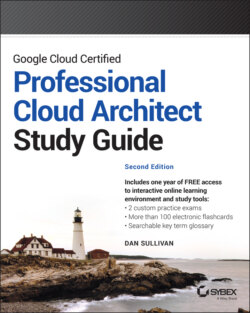Читать книгу Google Cloud Certified Professional Cloud Architect Study Guide - Dan Sullivan - Страница 71
TerramEarth Systems Integration
ОглавлениеFrom the description of the current system, we can see that on-board applications communicate with a centralized data collection system. Some of the data is collected in batches when vehicles return to base, and some is collected as it is generated.
As part of planning for envisioning future needs, an architect working with TerramEarth should consider how to support vehicles sending more data directly, eventually retiring the batch data load process in favor of having real-time or near-real-time data uploads for all vehicles. This would require planning an ingest pipeline that could receive data reliably and perform any preprocessing necessary.
Services that store and analyze the data will need to scale to support millions of vehicles transmitting data. To accomplish this, consider using a Cloud Pub/Sub queue, which allows decoupling and buffering so that data is not lost if the ingestion services cannot keep up with the rate that new data is received.
TerramEarth will likely want to share the growing inventory of data with dealers. This will require integrating TerramEarth and dealer systems. The architect should gather additional details to understand how best to share data with dealers. For example, an architect may ask, “What features of the data are significant to dealers?” Also, architects should consider how dealers would access the data. Dealer applications could query TerramEarth APIs for data, or TerramEarth could send data directly to dealer data warehouses or other reporting platforms.
Each case study has examples of systems integration requirements. When considering these requirements, keep in mind the structure and volume of data exchanged, the frequency of data exchange, the need for authentication, the reliability of each system, how to prevent data loss in the event of a problem with one of the services, and how to protect services from intentional or unintentional bursts in API requests that could overwhelm the receiving services.
